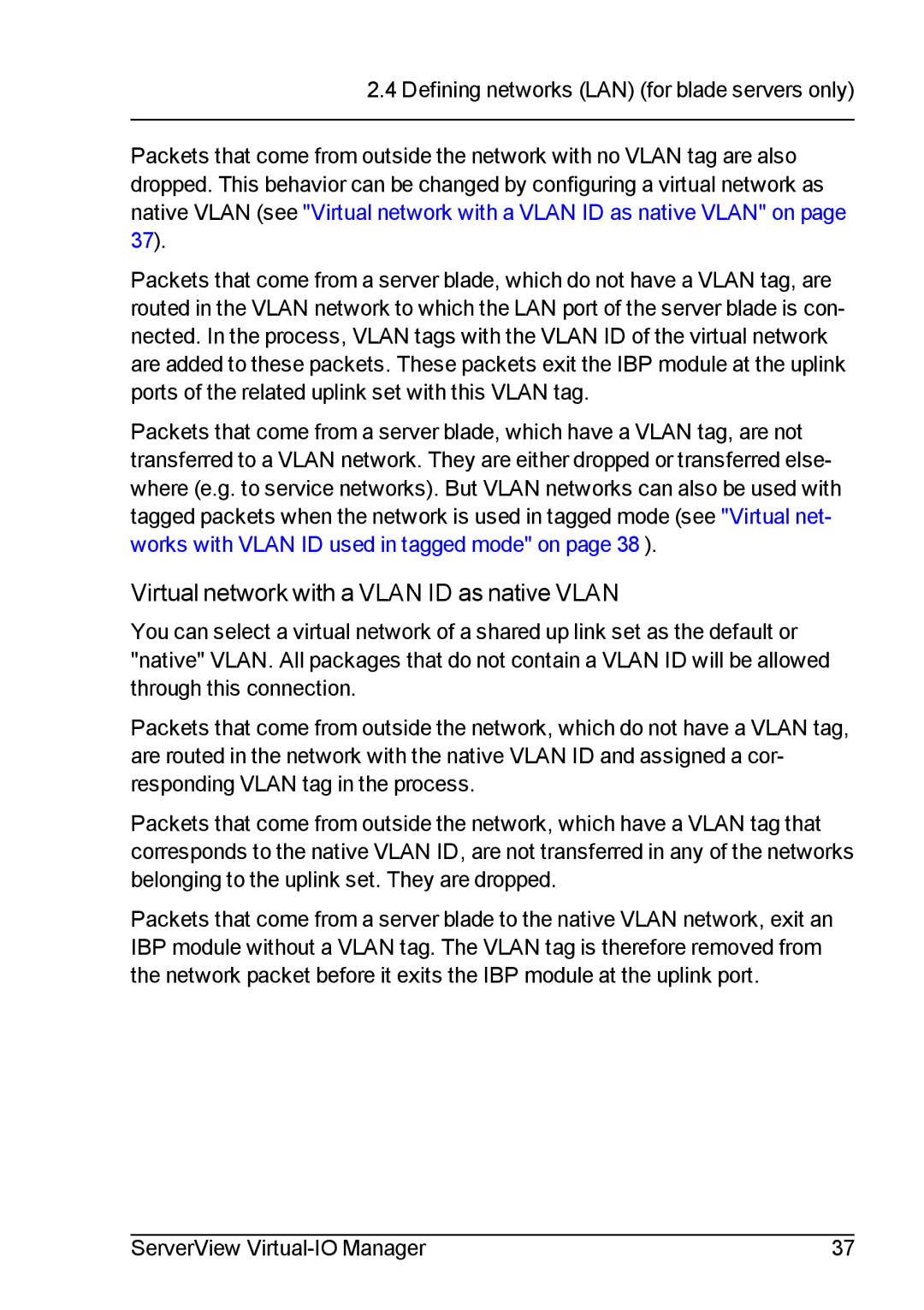
2.4 Defining networks (LAN) (for blade servers only)
Packets that come from outside the network with no VLAN tag are also dropped. This behavior can be changed by configuring a virtual network as native VLAN (see "Virtual network with a VLAN ID as native VLAN" on page 37).
Packets that come from a server blade, which do not have a VLAN tag, are routed in the VLAN network to which the LAN port of the server blade is con- nected. In the process, VLAN tags with the VLAN ID of the virtual network are added to these packets. These packets exit the IBP module at the uplink ports of the related uplink set with this VLAN tag.
Packets that come from a server blade, which have a VLAN tag, are not transferred to a VLAN network. They are either dropped or transferred else- where (e.g. to service networks). But VLAN networks can also be used with tagged packets when the network is used in tagged mode (see "Virtual net- works with VLAN ID used in tagged mode" on page 38 ).
Virtual network with a VLAN ID as native VLAN
You can select a virtual network of a shared up link set as the default or "native" VLAN. All packages that do not contain a VLAN ID will be allowed through this connection.
Packets that come from outside the network, which do not have a VLAN tag, are routed in the network with the native VLAN ID and assigned a cor- responding VLAN tag in the process.
Packets that come from outside the network, which have a VLAN tag that corresponds to the native VLAN ID, are not transferred in any of the networks belonging to the uplink set. They are dropped.
Packets that come from a server blade to the native VLAN network, exit an IBP module without a VLAN tag. The VLAN tag is therefore removed from the network packet before it exits the IBP module at the uplink port.
ServerView | 37 |
